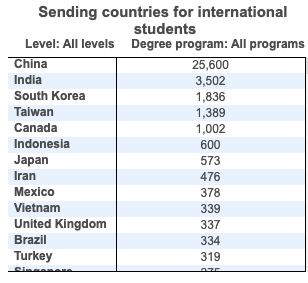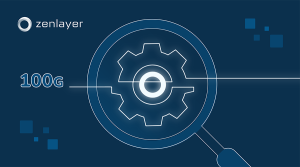And How Companies Are Solving Unique IT Challenges with Edge Cloud Solutions
The Covid-19 pandemic has permanently changed our world, and one of the biggest changes happened in online education. When the world was shutting down in early 2020, schools and universities around the world started scrambling to find ways to continue classes. This became increasingly important as we realized this pandemic wouldn’t be over in a few weeks or months. Furthermore, while many schools and universities already used hybrid learning models (part online and part offline), their platforms were not ready for the immense scaling that was forced because of school closures. According to an estimate by UNESCO, around 1.2 billion students were suddenly out of the classroom.
To accomplish this dramatic transformation, several unique challenges needed to be addressed. The most pressing issue was scalability. Most online learning platforms were built to handle smaller bandwidth tasks, like reading instructions or submitting text files. Suddenly, these platforms needed to handle live video streaming for thousands of students at the same time. While one page of text consumes about 3 KB of data, streaming one video at 480p consumes around 300,000 KB of data. Most schools and universities were simply not equipped to handle this dramatic rise in bandwidth consumption.
These applications must also be secure and private. Much of the educational content is proprietary to colleges and universities, and students pay thousands of dollars to gain access to them. Organizations thus want to ensure that their proprietary materials are securely stored and transported. Universities also hold private and sensitive information about their students. In April 2021, over 310,000 records were compromised in the University of Colorado data breach, which included social security numbers, transcript data, visa status and grades. Furthermore, video streaming applications have access to cameras and microphones, so they must be safe to use and prevent anyone with bad intentions from snooping and collecting data without permission.
Another equally important issue was reducing latency during video calls. As anyone will have noticed, it’s nearly impossible to have a conversation with terrible lag, let alone follow what the teacher is explaining or having a classroom discussion. While a few stutters can be ignored, students quickly become disengaged if the lag continues. This became particularly important for international students enrolled in schools abroad. More than 565.000 international students in U.S. schools came from China or India, and when schools announced long-term online classes, many traveled back home. To successfully deliver class materials halfway around the world, universities needed to use Content Delivery Networks (CDN). Emerging markets like India and China also have strong regulatory frameworks and local laws for data storage, which must also be accounted for when delivering content.
To compound the need of reducing latency is the high number of mobile users in emerging markets. China is estimated to have 99.7% of internet users on mobile devices, while India has 73% of internet traffic coming from mobile users. This mobile growth was spurred by low-cost smartphones and massive investments in telecom infrastructure. This rapid transition allows many students to follow online classes on their mobile phones. But large countries will often have an infrastructure gap where internet availability is not equally distributed. This means students with poor connectivity will have more difficulty following the video lectures.
If you’re an e-Learning organization that’s currently facing these challenges, it’s important to choose the cloud provider which has the right tools to resolve them. To handle scalability, choose a provider with a global private network and edge locations in emerging markets. To lower latency and help mobile users with limited bandwidth, make sure the provider has a Content Delivery Network (CDN), which can greatly improve user experience. As Aberdeen reports, “backhauling network traffic to a central data center for security and data protection can impact performance, especially in cloud-based and mobile applications”. Commitment to security and privacy is equally paramount. Zenlayer.com already has many of these tools available and has successfully helped e-Learning organizations in solving their challenges.
Let’s look at two case studies where Zenlayer was able to assist e-Learning platforms.
Talk-Cloud is an e-Learning platform used by universities and online education providers which was experiencing rapid growth and global demand with as many as 300,000 sessions a day being conducted in 2018. Talk-Cloud’s services needed to scale globally while keeping latency low for end users. Talk-Cloud deployed Zenlayer’s Bare Metal Cloud servers, which allows users to scale up and down instantly or shift resources to another region.
Because Zenlayer already had resources and infrastructure around the globe, deployments could be made quickly. Talk-Cloud ordered 16 nodes which were delivered in less than a month, with most of the managed nodes being ready within 1-2 weeks and the bare metal servers and Cloud Networking connections ready within minutes. This was an enormous advantage during the stellar growth following the global lockdown. Deploying Zenlayer’s services amounted to 5% latency reduction, 40% increase in global coverage paired with a 20% reduction in costs.

Zenlayer also recently started providing services for the University of California, who inadvertently needed to start streaming their content because of Covid-19. According to UC’s official enrollment data for the pandemic (Fall 2020), they served 38,542 international students, most living abroad. Looking at the national distribution, the vast majority is situated in East Asia. These students are currently using Zenlayer’s application to access UC’s content remotely and stream lectures. We observed 30% – 40% improvement in user experience due to the lowered latency, ease of access and speed of content delivery.

Nationality distribution for UC student body, Fall 2020.
The pandemic abruptly changed the e-Learning landscape
While the industry was already growing, school closures forced it to mature much faster than previously thought possible. As the world searched for alternative methods of delivering content, new models and tools were created to help students around the world continue their education. One may wonder what happens after Covid-19 ends. We are confident that hybrid learning models will remain in place for several reasons. First, schools have already invested in streaming technology and know it’s possible. Delivering classes online also reduces strain on college campuses and costs far less than having to host every student on-site. Having a strong online presence also allows schools and universities to enroll more students from abroad. And the demand from students who are unable to travel far distances and can follow classes on their mobile phones will continue to remain strong. The world has changed indefinitely and one of the industries that emerged stronger than before without a doubt is e-Learning.







